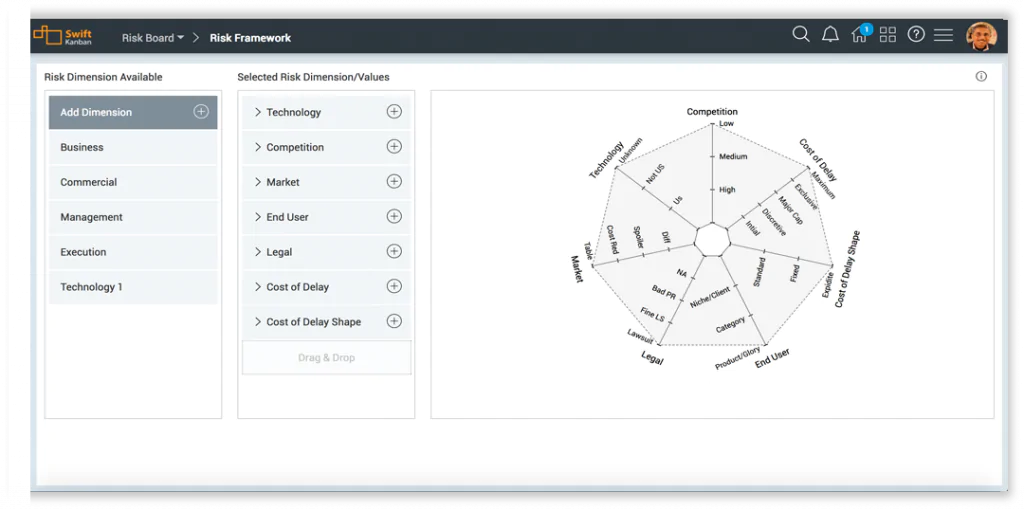Transformation approach using the enterprise services view, balancing system demand with capability, planning and prioritization using a visual decision framework, using decision support analytics like probabilistic forecasting and cost of delay.
This post extends further on the possibilities of Portfolio Kanban for Enterprise Transformation, building on your reading of the previous posts in this series. In the first post, we discussed a key bottleneck to enterprise transformation, exploring the merits of Portfolio Kanban in addressing this in the second post, defining mandatory characteristics of fit-for-purpose tooling to improve success in the third post.
To draw further value from the effort and capabilities of Portfolio Kanban is well within grasp.
When you view the enterprise as linked services of a system, Portfolio Kanban provides the building blocks. It provides the platform which can be further exploited to support not only operational but strategic decisions and choices. Further capabilities, if deployed, could clarify and help prioritize, ensuring executive management can make informed decisions from a shared, visual and data-driven platform.
Despite the underlying tooling being heterogeneous, and insulated, it is now possible to align and synchronize various enterprise functions/processes for a smooth flow of products and services across the Enterprise and to Customers.

A key additional requirement which helps is a decision framework for prioritization. An agreed set of risk/decision dimensions along which all initiatives, portfolios and projects may be scored, ideally with an easy to understand visual interface. With this capability augmented, executive management can review priorities based on current business conditions and customer demand, and focus on what will have the best impact for the enterprise.
As work continues to flow in projects and processes, aggregated through linkages and dependencies into meaningful portfolios, performance flow data continues to build. Further analytics and statistical techniques can yield useful decision support information from this organizational asset. Insights extracted can be ever more useful for:
- Sophisticated performance analysis and identification of misalignment
- Insights to improved demand management and capacity planning for the system
- Ability to improve the predictability of delivery cycle times
- Better understanding the impact of delays, supporting interventions and decisions
- Detailed understanding of flow efficiency, its liquidity and volatility
Many organizations use tracking and monitoring tools, for better managing their projects and processes. Several of these tools bring advantageous characteristics, alongside some native limitations. But as we have discussed in this series of four posts, that alone should not limit an organizations ability to transform and keep pace. In our view of the world, Portfolio Kanban is a good way forward, while protecting existing knowledge and investments. Building on heterogeneous tool integrations and specific tool characteristics, Portfolio Kanban delivers great value to the enterprise. And can be further exploited at an executive level for a wide range of strategic decisions, based not on gut instinct alone but supported by real enterprise performance information and decision dimensions.
Navin Anand
Regional Director – UK & Europe
This is the fourth (final) blog post in a four-part series, you can find the other posts from the links below:
Part 1. Portfolio Kanban for Enterprise Transformation
Part 2. Visual Management of Enterprise Services
part 3. Enterprise Transformation with Integrated Portfolio Kanban